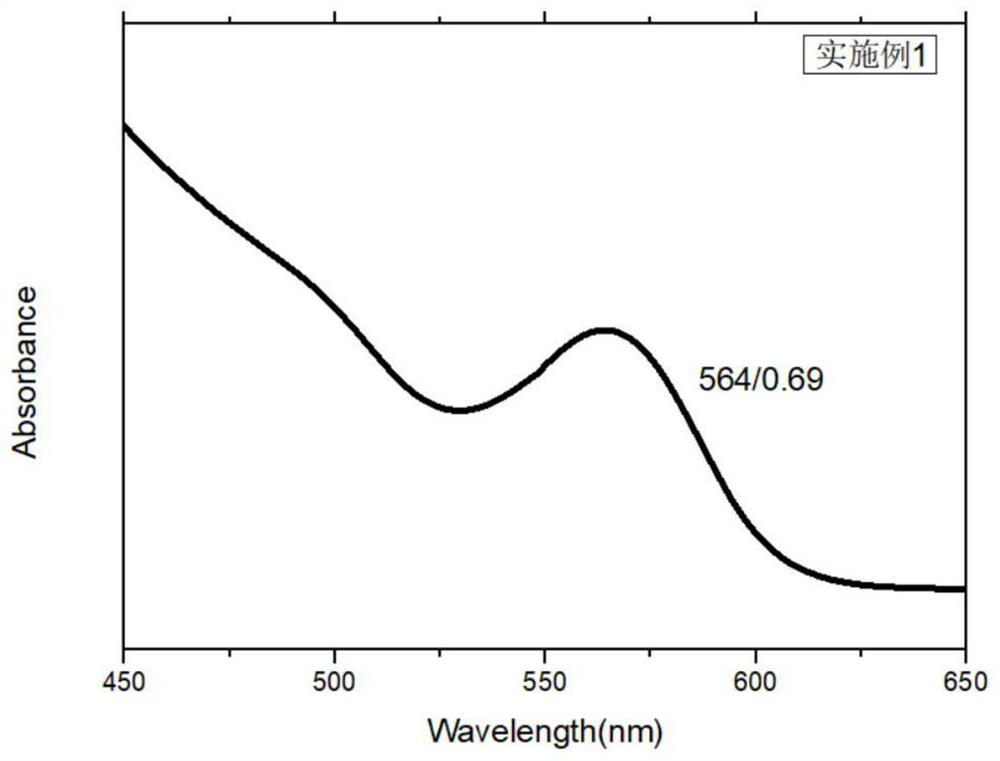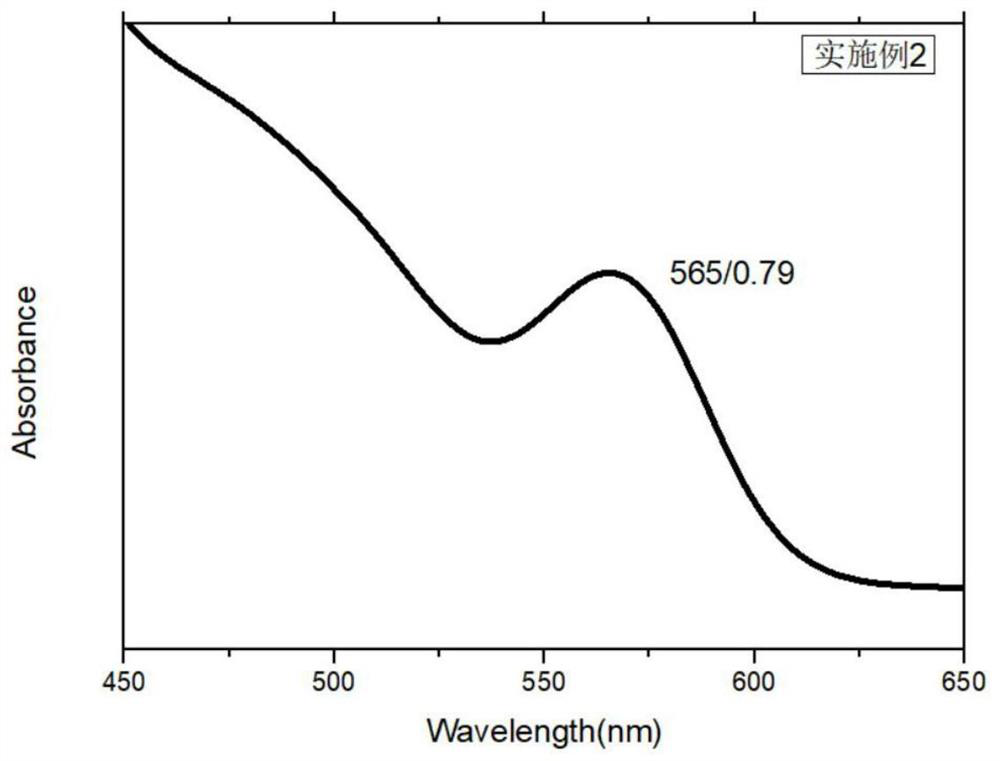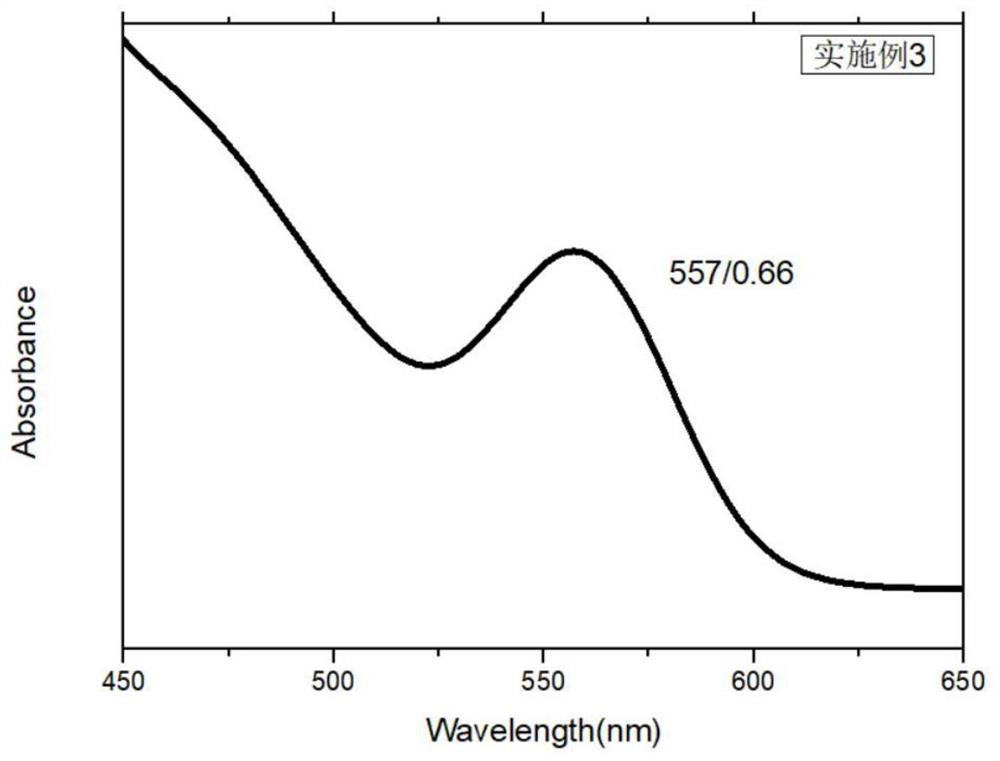III-V group quantum dots and preparation method thereof
A quantum dot and ion technology, applied in the field of quantum dot synthesis, can solve the problems of small size and wide size distribution, and achieve the effect of improving the size distribution and promoting the growth of large size.
- Summary
- Abstract
- Description
- Claims
- Application Information
AI Technical Summary
Problems solved by technology
Method used
Image
Examples
preparation example Construction
[0022] In the first aspect, the embodiment of the present application provides a method for preparing group III-V quantum dots, including:
[0023] (1) Reacting the Group III cation precursor with an organic phosphine having a lone pair of electrons in a first solvent to obtain a first solution.
[0024] The inventors of the present application found in research that the reactivity of group V anion precursors is much higher than that of group III cation precursors, and the unbalanced reaction rate leads to wide size distribution and usually smaller size of quantum dots. In the examples of this application, the organic phosphine with a lone pair of electrons has a certain coordination ability with the cations in the group III cation precursor, and the organic phosphine with a lone pair of electrons reacts with the group III cation precursor to produce intermediates. The activity of the intermediate is greater than that of the Group III cation precursor.
[0025] It should be n...
Embodiment 1
[0059] This embodiment provides a method for preparing group III-V quantum dots, the preparation steps of which include:
[0060] S1: 0.72mmol of In(Ac) 3 2.16mmol of oleic acid (OA) was mixed with 3.6mL of 1-octadecene (ODE), and reacted at 200°C for 2h in a nitrogen atmosphere, then cooled to 130°C to obtain the first mixed solution.
[0061] S2: Add 0.05 mM tris(1-adamantyl)phosphine to the first mixed solution obtained in step S1, and stir at a temperature of 130° C. for 0.5 h under a nitrogen atmosphere to obtain a first solution.
[0062] S3: Add 0.36mM tris(trimethylsilyl)phosphine (TMS 3 P) inject into the first solution obtained in step S2, and react at a temperature of 130° C. for 1 h under a nitrogen atmosphere.
[0063] S4: The temperature of the solution obtained in step S3 was raised to 260° C., and reacted for 20 minutes under a nitrogen atmosphere to obtain group III-V quantum dots.
Embodiment 2
[0065] This embodiment provides a method for preparing group III-V quantum dots, the preparation steps of which include:
[0066] S1: 0.72mmol of In(Ac) 3 2.16 mmol of oleic acid (OA) was mixed with 3.6 mL of 1-octadecene (ODE), and reacted at 120° C. for 3 hours in a nitrogen atmosphere, and then cooled to 130° C. to obtain a first mixed solution.
[0067] S2: Add 0.05mM n-butylbis(1-adamantyl)phosphine to the first mixed solution obtained in step S1, and stir at a temperature of 130°C for 0.5h under a nitrogen atmosphere to obtain the first solution .
[0068] S3: 0.36mM Na 3 As is injected into the first solution obtained in step S2, and reacted at a temperature of 130° C. for 1 h under a nitrogen atmosphere.
[0069] S4: The temperature of the solution obtained in step S3 was raised to 240° C., and reacted for 20 minutes under a nitrogen atmosphere to obtain group III-V quantum dots.
PUM
 Login to View More
Login to View More Abstract
Description
Claims
Application Information
 Login to View More
Login to View More - R&D
- Intellectual Property
- Life Sciences
- Materials
- Tech Scout
- Unparalleled Data Quality
- Higher Quality Content
- 60% Fewer Hallucinations
Browse by: Latest US Patents, China's latest patents, Technical Efficacy Thesaurus, Application Domain, Technology Topic, Popular Technical Reports.
© 2025 PatSnap. All rights reserved.Legal|Privacy policy|Modern Slavery Act Transparency Statement|Sitemap|About US| Contact US: help@patsnap.com



